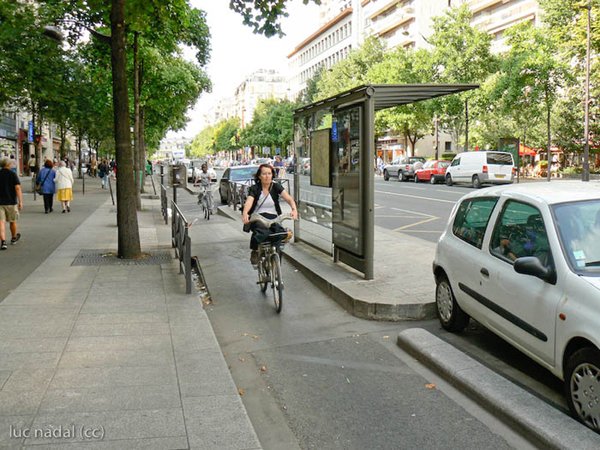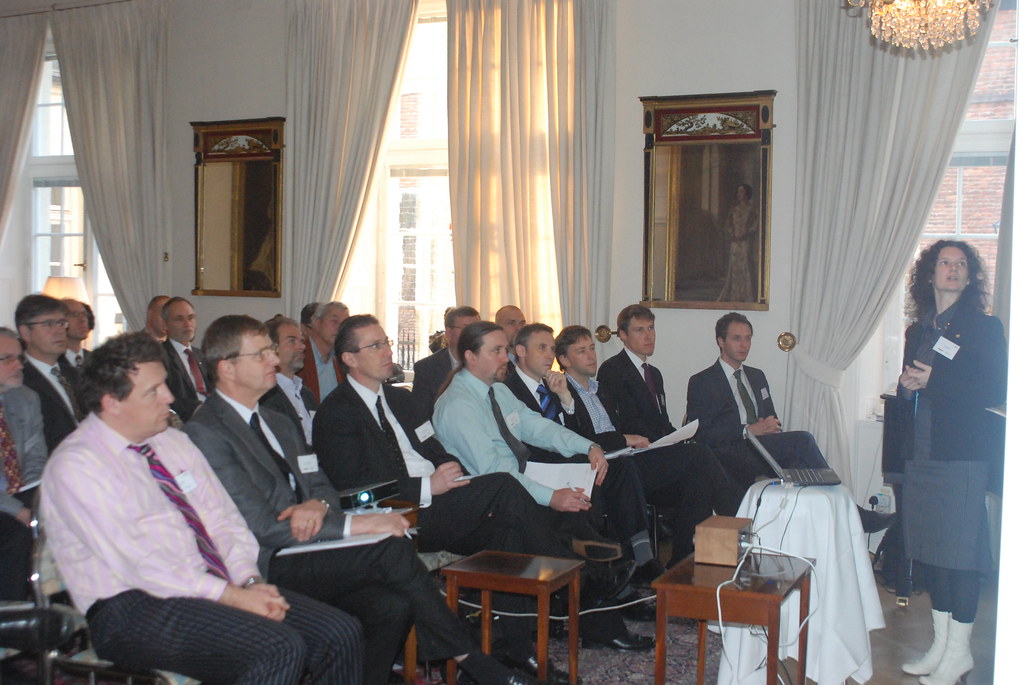In the rhythmic heartbeats of cosmopolitan cities, a new movement is emerging, embracing the power to reshape our urban landscapes for the better. It’s a movement that envisions a future where concrete jungles harmoniously integrate with sustainable mobility solutions, fostering a thriving environment and enhancing the quality of life for every citizen. As we delve into the realm of « Comment Favoriser une Mobilité Durable en Ville » - the art of promoting sustainable mobility in urban areas – we embark on an enlightening journey, exploring innovative approaches and visionary ideas that hold the key to transforming our cities into beacons of sustainable living. So, fasten your seatbelts and prepare to witness the fusion of creativity, pragmatism, and conscious living, all converging into a symphony of sustainable urban mobility.
1. Embracing Sustainable Transportation: The Path to Greener Urban Mobility
Sustainable transportation is the key to creating a greener and more efficient urban mobility system. As cities continue to grow and face increasing congestion and pollution, it is crucial to find innovative solutions that prioritize the environment and the well-being of citizens. Embracing sustainable transportation not only helps reduce carbon emissions but also enhances the quality of life for individuals and communities.
One way to promote sustainable transportation in cities is by investing in public transportation systems. Efficient and well-connected bus and train networks can significantly reduce the number of cars on the road, leading to fewer greenhouse gas emissions and less traffic congestion. Additionally, implementing bike-sharing programs and creating dedicated bicycle lanes can encourage people to use bicycles as a reliable mode of transportation for short distances. By providing convenient and accessible alternatives to private vehicles, cities can shift the reliance on cars towards greener options.
- Encouraging carpooling: Encourage citizens to share rides by promoting carpooling initiatives, such as designated carpool lanes or incentives for carpooling.
- Expanding electric vehicle infrastructure: Enhance the availability of charging stations for electric vehicles to support the transition towards cleaner transportation.
- Promoting walkability: Design urban spaces that prioritize pedestrians, promoting walkability and reducing the need for motorized transport for short distances.
In conclusion, embracing sustainable transportation is the way forward for greener urban mobility. By investing in public transportation, promoting biking and walking, and supporting alternative modes of transportation, cities can create a more sustainable and efficient transportation system. This not only benefits the environment but also improves the overall quality of life for residents.

2. Enabling Active Modes of Transportation: Promoting Walking and Cycling in the City
One of the key strategies for promoting sustainable urban mobility is to encourage active modes of transportation such as walking and cycling. By prioritizing these modes, cities can not only reduce traffic congestion and air pollution but also improve the health and well-being of their residents. There are several ways to enable and enhance walking and cycling in the city:
- **Investing in infrastructure:** Developing and maintaining a proper network of pedestrian and cycling infrastructure is crucial for promoting these modes of transportation. This includes building well-lit and safe sidewalks, dedicated cycling lanes, and bike-sharing systems.
- **Creating pedestrian-friendly streets:** Designing streets that prioritize pedestrians by providing wider sidewalks, green spaces, and pedestrian crossings can make walking a more enjoyable and efficient mode of transportation. Implementing traffic calming measures, such as reducing speed limits and installing traffic signals, can also improve safety and encourage more people to choose walking or cycling over driving.
- **Promoting awareness and education:** Raising awareness about the benefits of walking and cycling and providing education on road safety can help change people’s mindset and behaviors towards using these active modes of transportation. This can be done through public campaigns, school programs, and information sessions.
- **Encouraging behavior change:** Implementing incentives and rewards for those who choose to walk or cycle, such as offering discounts at local establishments or organizing community events centered around active transportation, can help motivate individuals to adopt these sustainable modes.
By focusing on enabling active modes of transportation, cities can create a more sustainable and vibrant urban environment that promotes healthier lifestyles and reduces the negative impacts of traffic congestion and air pollution.

3. Enhancing Public Transport: Making it Convenient, Affordable, and Attractive
There are several ways to promote sustainable mobility in cities by enhancing public transport. One important aspect is making it convenient for everyone. This can be achieved by improving the frequency of bus and train services, ensuring that there are accessible stops and stations throughout the city, and implementing real-time information systems to keep passengers informed about arrival and departure times. Moreover, the integration of different modes of transport, such as bike-sharing and car-sharing services, can further enhance convenience by providing multi-modal options.
Another crucial factor in promoting sustainable mobility is affordability. Public transport should be accessible to all members of society, irrespective of their financial status. This can be achieved by implementing fare reduction policies for students, seniors, and low-income individuals. Additionally, the implementation of electronic payment systems and the use of contactless cards can expedite the payment process, making public transport more cost-effective and user-friendly. Moreover, offering discounted monthly or yearly passes can incentivize regular commuters to opt for public transport over private vehicles, thereby reducing traffic congestion and carbon emissions.

4. Integrating Innovative Solutions: Harnessing Technology for Sustainable Urban Mobility
Integrating innovative solutions is essential in fostering sustainable urban mobility. By harnessing the power of technology, cities can redefine the way people move, making transportation more efficient, accessible, and environmentally friendly. Leveraging digital advancements allows for the development of intelligent systems that optimize routes, manage traffic flow, and reduce congestion, ultimately leading to a more sustainable and livable urban environment.
One key aspect of integrating innovative solutions is the promotion and adoption of electric vehicles (EVs). Electric transportation not only reduces greenhouse gas emissions but also improves air quality. Implementing a robust charging infrastructure is crucial in encouraging the transition to EVs. Installing charging stations in strategic locations such as parking lots, residential areas, and commercial centers will enhance the convenience and accessibility of electric mobility. Additionally, incentivizing the adoption of electric vehicles through tax benefits and subsidies can further accelerate the shift towards a sustainable urban transportation system.
As we conclude our journey through the avenues of sustainable mobility in urban settings, we are left with a lingering sense of empowerment and hope. The quest for a greener and more efficient mode of transportation is not an unattainable dream, but a tangible reality that lies within our collective grasp.
By embracing a variety of innovative approaches and adopting a mindset of change, we have the power to reshape our cities into vibrant, interconnected ecosystems that prioritize the well-being of both inhabitants and the environment. As cities continue to expand and evolve, the need for sustainable mobility becomes increasingly imperative.
Through this article, we have explored a multitude of ideas and strategies that can pave the way for a more sustainable future. We have championed the importance of investing in pedestrian-friendly infrastructure, promoting accessible public transportation, and fostering a culture of active transportation. These concepts, often seemingly disparate, intertwine to form an intricate tapestry that paints a vivid picture of what our urban landscapes could become.
Our journey has also unveiled the vital role that technology plays in propelling us forward towards our sustainable vision. From ride-sharing apps that optimize carpooling to emerging electric and autonomous vehicles, advancements in technology hold great promise for transforming our cities into beacons of sustainability.
As we reflect on the challenges that lie ahead, let us remember that change begins at the individual level. Each and every one of us has the power to make a difference through the choices we make on a daily basis. By opting for greener transportation alternatives, we contribute to the collective effort of fostering a sustainable urban environment.
So, as we bid farewell to this exploration of sustainable mobility in cities, let us carry the torch of change forward. Let us advocate for comprehensive policies that encourage sustainable urban planning, demand an efficient public transportation system, and invest in the development of alternative fuel sources.
Together, we hold the key to unlocking a future where the rhythmic hum of bicycles and the laughter of pedestrians reclaim their rightful place in our thriving metropolises, where the air is clean, and the streets are alive with the vibrant pulse of sustainable mobility.




